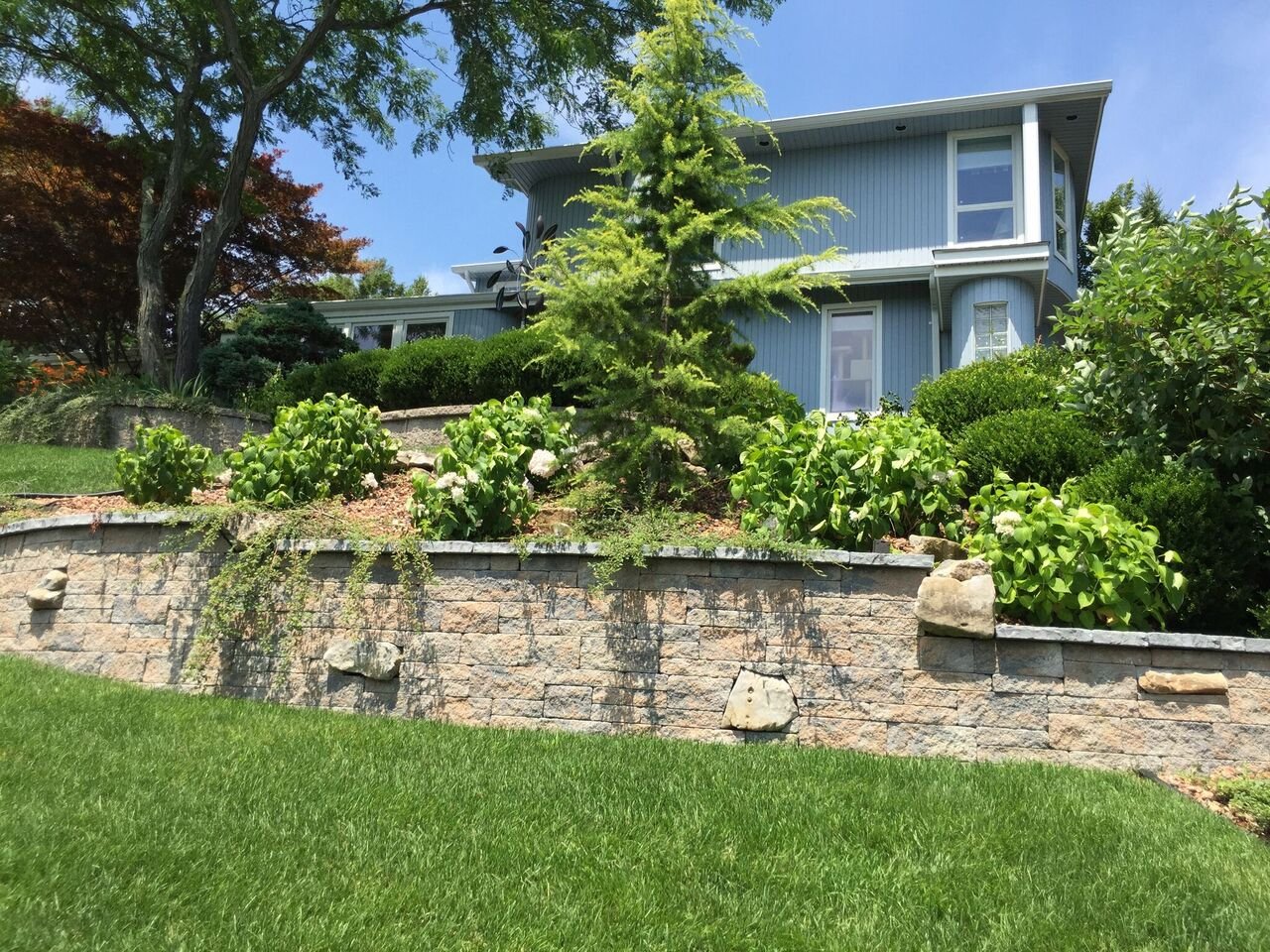No landscape is quite complete without the greenery. Without a broad and well-maintained balance of trees, shrubs, grasses, ground cover plants, and of course flowers, a landscape may feel barren. But before planting, it’s important to think about sustainability and maintenance. Making the right choices will save water, time, and energy. Here are six ways that adding plantings can make for sustainable landscaping in the Oyster Bay, NY area.
Related: HOW TO COMPLEMENT EXPERT MASONRY WITH BEAUTIFUL, COLORFUL PLANTINGS IN THE DEER PARK, NY, AREA
Plant for the Environment
The plants that are best suited for your environment are the ones that have been evolving in the area for millions of years without any assistance from humans. These native plants are perfectly adapted to the environment, using only the water, resources, and sunlight that nature provides. Choosing native plants for your landscape is a wonderful way to achieve harmony with the natural world as your landscape will require far less water, fertilizer, weed killer, and pesticides. Native plants offer an incredible variety that will delight you with low maintenance, a lower water bill, and of course beauty.
Plant for the Seasons
As the seasons change, various plants will naturally start to thrive while others go into dormancy. A successful and sustainable landscape will take into account these changes so that your landscape always looks dynamic and beautiful. Landscape designers may place various plantings close to each other so that they succeed one another. This will ensure color and a lively look throughout the year, with each seasonal growth setting the stage for the next.
Plant for Companionship
Just like in the natural world, native plants will use the benefits of each other in order to survive. You may have heard of the “Three Sisters” approach to gardening: planting corn, beans, and squash together for a synergy that benefits all three plants. You can take the same approach with other plants. Some plants will provide shade and shelter from above while others will protect the soil from eroding. Pollinators such as bees, butterflies, and hummingbirds will cross-pollinate hundreds of flowers per day, improving the health and genetic diversity of every plant. Certain plants grow particularly well together, so be sure to ask your landscape designer about these companion plants.
Plant for Longevity
It’s sometimes recommended to prioritize the more resilient plants early on in growing a sustainable landscape. These plants, likely natives, are ones that will stand up against any harsh weather. Eventually, these plants will become the anchors for your landscape and will provide cover and support for more younger and vulnerable plants. Shrubs and trees are an excellent place to start due to their strength and long lifespan.
Minimize the Lawn and Focus on an Edible Landscape
A big part of sustainable landscaping is growing plants that can provide you and your family some benefits other than just shade, appearance, and fragrance. Edible fruits and vegetables are not only wonderfully attractive in a landscape, but they provide huge benefits to the landscape as well as your family’s nutrition and culinary abilities. A growing trend is to replace portions of the lawn with an edible landscape.
Minimize the Lawn and Focus on the Pollinators
Pollinators including bees, birds, and other creatures are being severely impacted by the use of herbicides and pesticides. By reducing the lawn in favor of pollinator gardens, you can create a landscape that will support pollinators and other creatures.


